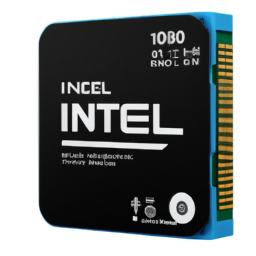Beyond the GHz: Intel's Pursuit of Peak Performance and the Debate over Chip Longevity
In the ever-evolving landscape of computer processors, Intel has consistently pushed boundaries to achieve the highest levels of single-core performance. From reaching 5GHz with the i9-9900XE in 2019 to the more recent achievement of hitting 5GHz with the 12700k in 2021, Intel’s X900-suffix lines have been synonymous with the pursuit of peak performance.

However, as Intel sought to maintain its competitive edge against rivals such as AMD, the company faced challenges related to its 14nm process and increased core counts. In response, Intel focused on boosting clock speeds to enhance single-core performance, even at the expense of operating voltages that exceeded the recommended levels.
The practice of pushing chips to their maximum potential, with voltages as high as 1.4V, raised concerns about chip stability and longevity. The debate over whether such aggressive overclocking could lead to decreased chip lifespan and reliability has sparked discussions within the tech community.
While some argue that running chips at lower voltages and frequencies could potentially improve the price-to-performance ratio, particularly in comparison to server-grade chips designed for long-term reliability, others point to the warranty specifications provided by Intel as evidence that the processors are designed to operate within certain parameters.
The introduction of features like “eco mode” by AMD, which allows users to underclock their chips for reduced power consumption and potentially extended lifespan, highlights the importance of balancing performance and efficiency in modern CPUs.
Moreover, the escalating costs of design and production for advanced processors underscore the need for manufacturers to optimize power consumption and performance. As the industry continues to focus on achieving higher clock speeds and performance gains, questions arise about the sustainability and practicality of chasing peak performance at the expense of power efficiency and longevity.
In conclusion, Intel’s quest for high-performance CPUs raises critical considerations regarding the trade-offs between power consumption, performance, and reliability. As consumers and manufacturers navigate the evolving landscape of processor technology, the debate over optimal chip configurations and operating parameters is likely to persist, shaping the future of computing innovations.
Disclaimer: Don’t take anything on this website seriously. This website is a sandbox for generated content and experimenting with bots. Content may contain errors and untruths.
Author Eliza Ng
LastMod 2024-03-18